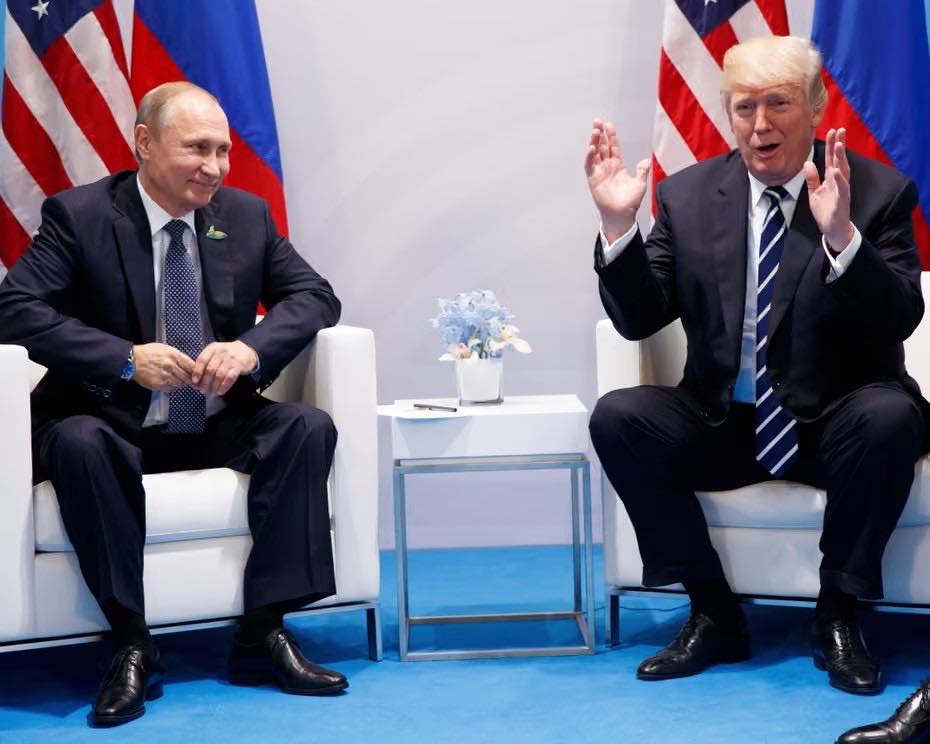The current meeting in Anchorage is more than a symbolic “halfway point” between the United States and Russia. For the Kremlin, it’s an attempt to breach the sanctions wall via localized economic engagement with Alaska — from the fishing industry and technical flight arrangements to critical minerals and oil-and-gas ventures.
Media outlets close to the talks are already hinting at “sweeteners” for Moscow. The Telegraph reported that Donald Trump is preparing to offer Vladimir Putin access to Alaska’s rare earth resources — a version echoed by local and industry publications, which stress it’s a political signal rather than a formal deal.
To understand the Kremlin’s logic, it’s worth recalling that Moscow’s “trial balloons” for an economic foothold in Alaska have surfaced before — only to fizzle under market pressures, regulatory barriers, and, since 2022, sanctions. Between 2011 and 2016, Russia’s Indigo Capital investment group controlled Nome Gold Alaska, a gold mining asset sold in December 2016 to Arctic Gold Mining LLC. In 2024, local fish processor Whittier Seafood — founded by Russian-born Alexei Kozlov — filed for bankruptcy, with its owner openly linking the collapse to the war’s fallout, sanctions, and falling salmon prices. While these seem like isolated stories, experience from the Balkans and the Caucasus shows that without tight oversight, Russia quickly turns such local schemes into systemic channels of influence.

A separate case involves Russian Old Believer communities on Alaska’s Kenai Peninsula. As full U.S. residents working in fishing, small business, and farming, they form part of Alaska’s cultural landscape — but one the Kremlin could easily leverage. Villages like Nikolaevsk, Voznesenka, Razdolna, and Kachemak-Selo operate bilingual schools and self-contained local economies. Alongside restored heritage sites like the Russian Bishop’s House in Sitka National Historical Park, they bolster Moscow’s convenient narrative of Alaska’s “Russian heritage.”
Why Now? The Kremlin’s Window of Opportunity
First, the fishing industry. Before sanctions, the U.S. imported roughly $1.2 billion annually (2021) in Russian fish and crab. But the December 22, 2023 “Seafood Determination” closed a key loophole — banning Russian-origin salmon, cod, pollock, and crab even if processed in third countries (chiefly China). Rolling back this measure would be a direct win for Moscow, making its removal a clear Kremlin priority.
Second, critical minerals. Alaska’s Graphite One project holds federal FAST-41 status and DPA funding, with plans for domestic processing as part of a broader U.S.-allied strategy to reduce reliance on China and Russia. That’s why any talk of joint U.S.–Russia ventures in rare earths sparks resistance on political, security, and property-rights grounds. For the EU — which has just launched its Critical Raw Materials Act (CRMA) and is building its own “green” supply chains — such initiatives would look like a direct undermining of collective strategy.
Russia would also push for U.S. sanctions relief — a move Brussels rightly fears could trigger a domino effect. The moment Washington carves out an exception, some European actors may be tempted to “synchronize” exemptions in their own sectors — from shipping to machinery — directly expanding Russia’s wartime resource base. Given that the EU is now a major financial backer of Ukraine, that would mean heavier strain on Europe’s own economy.
Putin’s Playbook
The Kremlin’s approach is straightforward yet effective: use Alaska as a “point of entry” for selective normalization — starting with technical engagement (exceptions, consultative formats), moving to trade (seafood, aviation parts), and ideally reaching the resource sector (critical minerals, defense-industrial services). Moscow has bargaining chips — temporary de-escalation at the front or grand promises of talks — but these come with high risk for Ukraine and Europe. Analysts call the moment “deeply concerning for Europe”: without Kyiv at the table, any “packages” could legitimize Russia’s territorial gains.
For Ukraine, the threat is clear: Moscow has repeatedly used “pause-for-deal” scenarios to regroup and restore strike capabilities — with each pause followed by renewed escalation.
The Real Test
Today, Alaska is less about the “romance of shared history” and more a stress test for the sanctions architecture, property-rights enforcement, and supply-chain security. Trump — and others — should remember: when Moscow gains access to something, even “technical” access, it treats it as a stepping stone for expansion. History shows that where Russian state interests arrive, they quickly claim ownership — and do not leave voluntarily.
If packages emerge involving minerals, seafood, or “targeted” aviation exemptions, the Western response must remain firm: sanctions that work, investment in domestic critical mineral projects, and energy initiatives that push Russia out of markets — with no deals that reward aggression under the guise of “peace for resources.” Anything less risks turning Alaska into a precedent for retreat.
